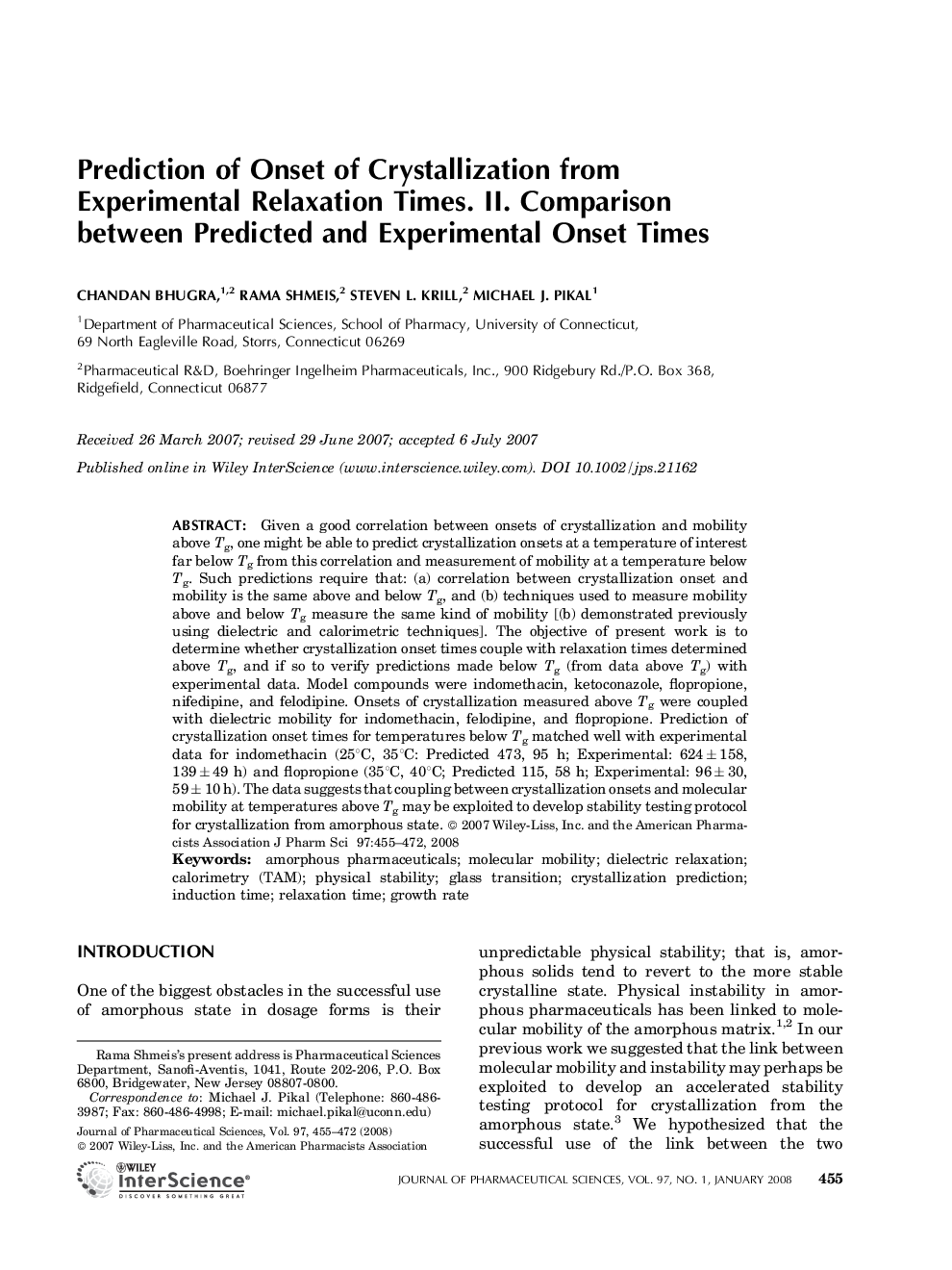| Article ID | Journal | Published Year | Pages | File Type |
|---|---|---|---|---|
| 2487608 | Journal of Pharmaceutical Sciences | 2008 | 18 Pages |
ABSTRACTGiven a good correlation between onsets of crystallization and mobility above Tg, one might be able to predict crystallization onsets at a temperature of interest far below Tg from this correlation and measurement of mobility at a temperature below Tg. Such predictions require that: (a) correlation between crystallization onset and mobility is the same above and below Tg, and (b) techniques used to measure mobility above and below Tg measure the same kind of mobility [(b) demonstrated previously using dielectric and calorimetric techniques]. The objective of present work is to determine whether crystallization onset times couple with relaxation times determined above Tg, and if so to verify predictions made below Tg (from data above Tg) with experimental data. Model compounds were indomethacin, ketoconazole, flopropione, nifedipine, and felodipine. Onsets of crystallization measured above Tg were coupled with dielectric mobility for indomethacin, felodipine, and flopropione. Prediction of crystallization onset times for temperatures below Tg matched well with experimental data for indomethacin (25°C, 35°C: Predicted 473, 95 h; Experimental: 624 ± 158, 139 ± 49 h) and flopropione (35°C, 40°C; Predicted 115, 58 h; Experimental: 96 ± 30, 59 ± 10 h). The data suggests that coupling between crystallization onsets and molecular mobility at temperatures above Tg may be exploited to develop stability testing protocol for crystallization from amorphous state. © 2007 Wiley‐Liss, Inc. and the American Pharmacists Association J Pharm Sci 97:455–472, 2008
